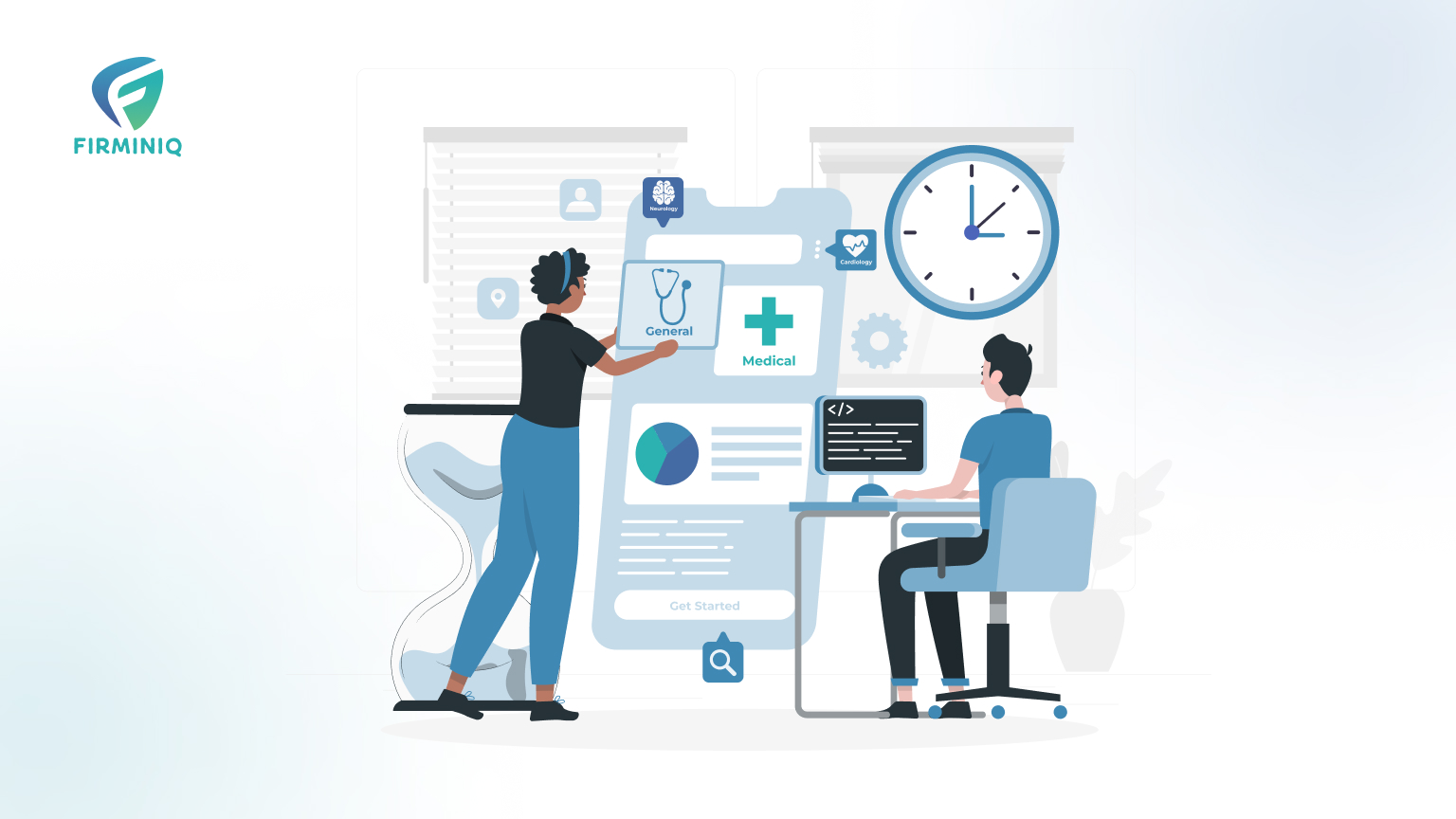In the ever-evolving healthcare landscape, maintaining a competitive edge requires a proactive approach. Healthcare apps are required to adhere to specific guidelines including compliance with regulatory requirements, robust security and safety measures, advanced patient care, all while maintaining a delicate balance between swift delivery and precision.
Balancing the speed of delivery with precision is a challenge that requires careful navigation and strategic planning in healthcare. Embracing a dynamic approach that ensures on-time app delivery and iterative enhancements allows organizations to remain relevant and competitive. Perfect harmony ensures that the organizations can keep pace with advancing needs and create apps that adjust to the patients, providers, and other stakeholders needs.
In this blog we will delve into strategies that enable healthcare organizations to navigate the dynamic healthcare environment and deliver apps timely. From efficient project planning, embracing agile methodologies, integral feature addition and robust CI/CD pipelines, let us uncover all the strategies that help with timely app delivery and more.
Strategies that Help with Timely Healthcare App Delivery and Iteration
Delve into effective strategies that enable businesses to adhere to all the necessary healthcare requirements & constraints, while ensuring timely app delivery.

1. Thorough Project Planning
Creating a detailed project plan is a primary step in ensuring the success of healthcare app delivery. A comprehensive plan includes a thorough breakdown of tasks, milestones, and dependencies, and a roadmap for the entire project lifecycle.
A well-organized plan helps with efficient resource allocation, anticipates potential bottlenecks, and enables tracking progress against set timelines. Regularly revising and communicating adjustments to the team ensures that everyone is informed and aligned with the project status, promoting timely app delivery.
2. Incremental Feature Integration
Systematically adding new functionalities to a healthcare app over time can contribute to timely app delivery by allowing organizations to prioritize essential functionalities. This approach enables faster deployment of the core components of the healthcare application, meeting immediate needs and ensuring a quicker time-to-market.
Adopting an iterative development model, organizations can gather user feedback and insights early on, facilitating adjustments and improvements. Once the initial release is live, subsequent features can be seamlessly integrated, providing a flexible and adaptive strategy.
3. Components Addition
To accelerate delivery timelines, leveraging readily available pre-built components is an appropriate strategy that allows seamless integration directly into the application. With this strategic approach, organizations not only save time but can select the components precisely and integrate them in the application that aligns with their specific needs and priorities.
These components may include basic modules like sign-up, login and push notifications as well as accelerators that seamlessly connect to diverse medical devices, secure communication hubs and more. These components empower organizations to speed up development while keeping the budget in control.
At FIRMINIQ we have a range of such components including ConnectedCareGo SDK that lets you seamlessly connect to diverse medical devices for enhanced patient care, InteractIQ, an admin-controlled audio, video, and text chat for customer communications or other specialized healthcare tools and more. Adding pre-built components can expedite the development process and eliminate the need to build certain functionalities, saving time.
4. Embracing Agile Methodologies
Embracing Agile methodology is one of the influential strategies that accelerates app development cycle. Revolutionizing the traditional development approach, Agile methodologies allow teams to swiftly respond to changing requirements, industry regulations and feedback. It ensures that the app remains relevant and aligned with the evolving landscape while reducing the time required for development.
Agile also allows the development process to be divided into iterative cycles known as sprints that break down the development process. In every sprint, a designated set of user stories is chosen for implementation and subsequent delivery. The iterative approach allows stakeholders to witness the results with every sprint while fostering transparency and continuous improvement.
5. Implementing CI/CD Pipelines & Foster DevOps Culture
Adoption of robust Continuous Integration and Continuous Deployment (CI/CD) pipelines is one of the strategic imperatives that boosts the efficiency and thus the speed of app delivery. The pipelines help introduce an automated and seamless process, from app building to deployment. Breaking the development process, testing, and deployment into small sprints minimizes the manual intervention and reduces overall app delivery time. In CI/CD pipelines, automated tests are vital for ensuring the reliability of app updates or iterations. These tests run at distinct stages, thoroughly validating updates before they reach stakeholders.
In addition to CI/CD pipelines, nurturing a DevOps culture is also essential, as it embraces both cultural and technical aspects to bridge the gap between development and operations teams. It ensures robust CI/CD pipelines that enhance delivery efficiency. DevOps approach encourages collaboration and communication, breaking down silos and expediting issue resolution. Teams operate independently and adopt a software engineering culture, workflow, and toolset. This approach prioritizes operational needs alongside architecture, design, and development, recognizing their equal importance. DevOps also prioritizes use of automation tools, reducing manual effort in processes like code deployment and infrastructure provisioning, resulting in faster and more consistent delivery.
6. Prioritize Test Automation
Test automation is critical for maintaining the quality of healthcare apps while accelerating the delivery. This involves comprehensive testing, covering several types such as unit tests, integration tests, regression tests, performance tests, etc.
Automated tests enable quick and repetitive execution while offering rapid feedback to developers and allowing early detection of issues. It reduces the time and effort needed for bug fixing. Automated tests also play a crucial role in ensuring ongoing quality by avoiding the introduction of issues or defects when implementing new features, especially in a fast-paced development setting. However, organizations may face challenges when it comes to procuring suitable tools and selecting the automation framework.
QAGo, proprietary test automation framework overcomes these challenges & enables early automation to deliver the connected applications in the shortest possible time frame without compromising on quality.
7. Cross-Functional Collaboration
Encourage cross-functional collaboration among development, testing, and operational teams to streamline communication, boost efficiency, and address challenges collectively. This collaborative approach of breaking down the silos ensures a holistic understanding of project goals for every team member and fosters a unified effort towards timely delivery.
8. Continuous Monitoring and Feedback Loops
Establish continuous monitoring systems and feedback loops for healthcare apps to track their performance post-deployment. Monitoring real-time data helps identify potential issues, gather user feedback, and implement necessary improvements promptly, contributing to ongoing app optimization. The real-time insights gained from continuous monitoring facilitate quicker adjustments and improvements, contributing to the ongoing optimization of the app and ensuring it remains adaptive.
Epilogue
Achieving timely app delivery and iteration in the dynamic healthcare landscape requires a systematic approach. From efficient project planning that sets the foundation to embracing Agile that brings flexibility, incremental feature integration that prioritizes essential functionalities, robust CI/CD pipelines to streamline the development process, fostering DevOps to prioritize automation, and utilizing pre-built components that allow organizations to enhance development speed; there are many other strategies that fosters a unified approach to timely app delivery.
These innovations allow healthcare apps to not only meet current needs but also remain scalable and adaptive to future industry trends. At FIRMINIQ we not only adhere to DevOps practices and embrace Agile methodologies for flexibility but go the extra mile by facilitating seamless integration of pre-built components, streamlining project development.






